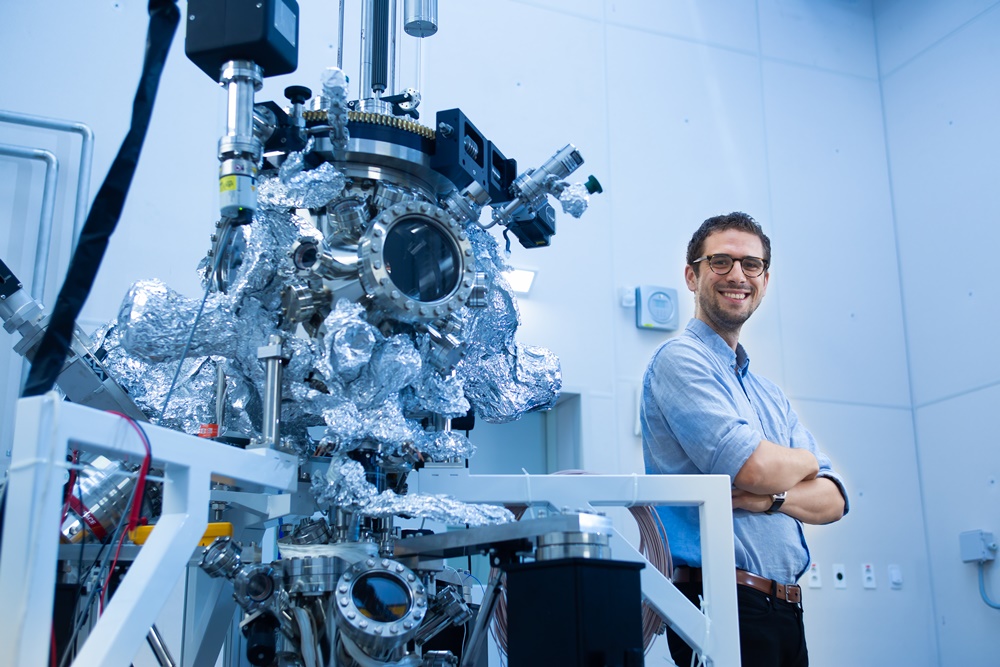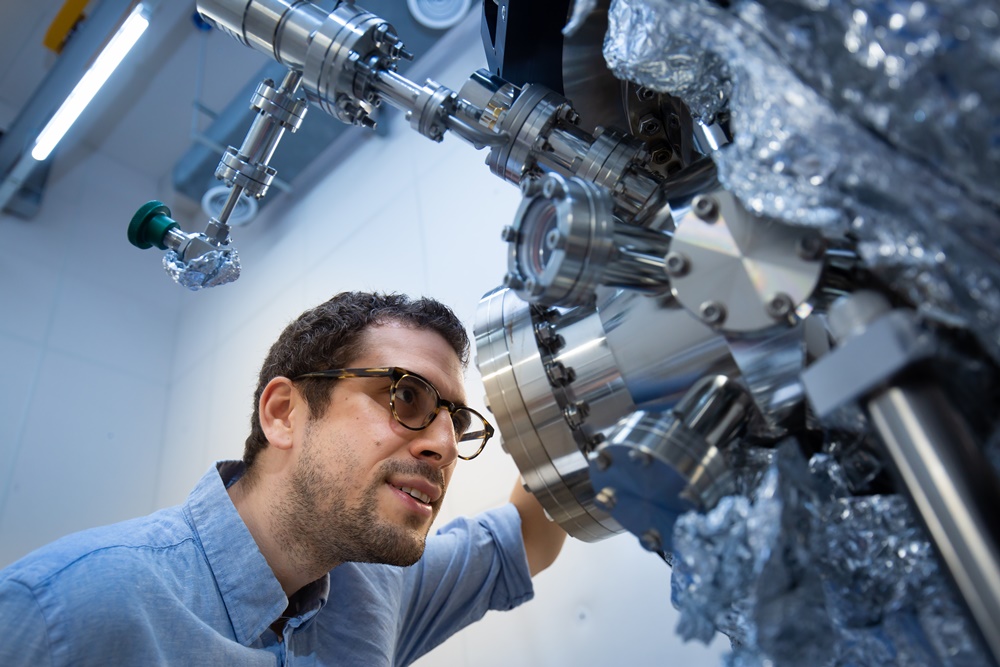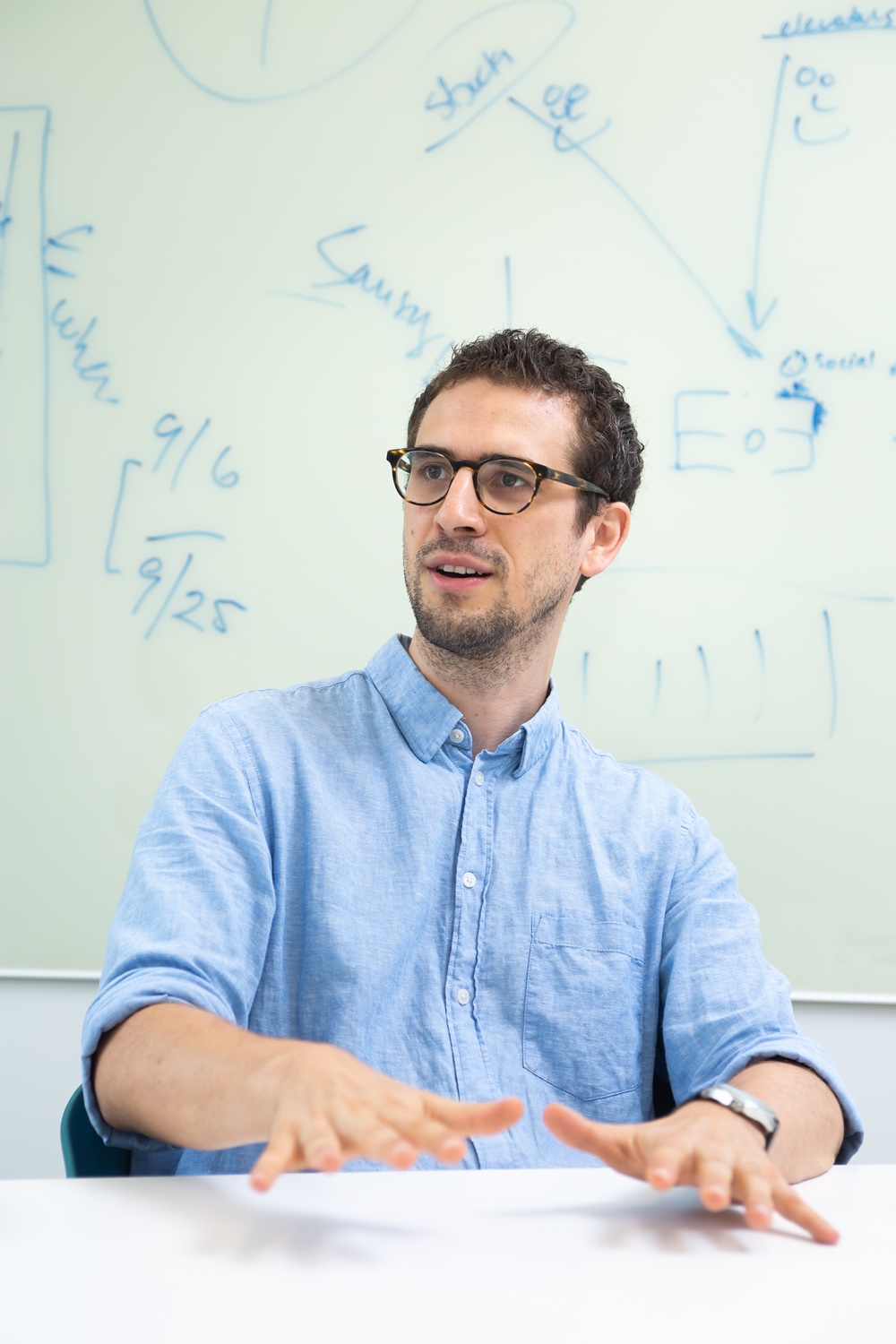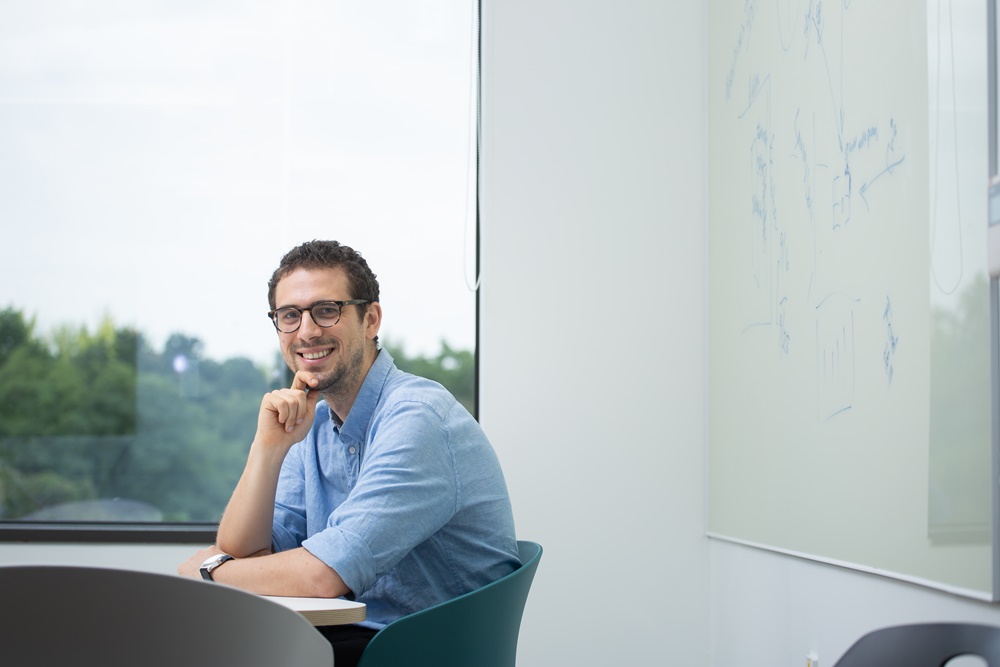주메뉴
- About IBS 연구원소개
-
Research Centers
연구단소개
- Research Outcomes
- Mathematics
- Physics
- Center for Underground Physics
- Center for Theoretical Physics of the Universe (Particle Theory and Cosmology Group)
- Center for Theoretical Physics of the Universe (Cosmology, Gravity and Astroparticle Physics Group)
- Dark Matter Axion Group
- Center for Artificial Low Dimensional Electronic Systems
- Center for Theoretical Physics of Complex Systems
- Center for Quantum Nanoscience
- Center for Exotic Nuclear Studies
- Center for Van der Waals Quantum Solids
- Center for Relativistic Laser Science
- Chemistry
- Life Sciences
- Earth Science
- Interdisciplinary
- Center for Neuroscience Imaging Research (Neuro Technology Group)
- Center for Neuroscience Imaging Research (Cognitive and Computational Neuroscience Group)
- Center for Algorithmic and Robotized Synthesis
- Center for Nanomedicine
- Center for Biomolecular and Cellular Structure
- Center for 2D Quantum Heterostructures
- Institutes
- Korea Virus Research Institute
- News Center 뉴스 센터
- Career 인재초빙
- Living in Korea IBS School-UST
- IBS School 윤리경영


주메뉴
- About IBS
-
Research Centers
- Research Outcomes
- Mathematics
- Physics
- Center for Underground Physics
- Center for Theoretical Physics of the Universe (Particle Theory and Cosmology Group)
- Center for Theoretical Physics of the Universe (Cosmology, Gravity and Astroparticle Physics Group)
- Dark Matter Axion Group
- Center for Artificial Low Dimensional Electronic Systems
- Center for Theoretical Physics of Complex Systems
- Center for Quantum Nanoscience
- Center for Exotic Nuclear Studies
- Center for Van der Waals Quantum Solids
- Center for Relativistic Laser Science
- Chemistry
- Life Sciences
- Earth Science
- Interdisciplinary
- Center for Neuroscience Imaging Research (Neuro Technology Group)
- Center for Neuroscience Imaging Research (Cognitive and Computational Neuroscience Group)
- Center for Algorithmic and Robotized Synthesis
- Center for Nanomedicine
- Center for Biomolecular and Cellular Structure
- Center for 2D Quantum Heterostructures
- Institutes
- Korea Virus Research Institute
- News Center
- Career
- Living in Korea
- IBS School
News Center
| Title | Exploring the Depths of the Microscopic World with | ||||
|---|---|---|---|---|---|
| Name | 전체관리자 | Registration Date | 2020-06-24 | Hits | 5093 |
| att. |
 thumb.jpg
thumb.jpg
|
||||
Exploring the Depths of the Microscopic World withResearch fellow Dr. Philip Willke from the Center for Quantum Nanoscience within the Institute for Basic Science
“One atom is roughly 10 million times smaller than millimeter. If the Earth is reduced to the size of an orange, an orange on the Earth will be reduced to the size of an atom. We can make image of single atom, a fundamental building block. We can also move this atom around. It’s so fascinating that it’s possible. This is why I chose to study scanning tunneling microscope (STM) technology.” Recently, the Center for Quantum Nanoscience within the Institute for Basic Science and IBM of the US succeeded in taking an MRI image of a single atom using STM. We met with researcher Dr. Philip Willke, the driving force behind the “world’s most minute MRI”. Dr. Willke completed his bachelor’s, master’s, and doctorate courses at the University of Göttingen, often touted as Germany’s most prestigious higher education institution. He received scholarships from the German National Academic Foundation, Konrad-Adenauer-Foundation, and so on and the Science Award of the Lower Saxony, the state of his alma mater. Contrary to our hasty speculation based on his impressive background that he must have the air of a serious scientist, he came across as friendly and sociable. He said that this was attributable to his active participation in extracurricular activities during college. “Of course I was good at my studies but, usually they ask ‘what else do you do’. You need to have something that distinguishes you from other people. During my undergrads, I was elected by the student body of physics department, to represent all the issues in the board of faculty. I tried to reflect the opinions of one thousand students in our department’s decision-making process.”
As a student representative, he exerted his best effort to improve the quality of both existing and new courses and to protect the students’ “right to take advanced courses”. Such an experience served to broaden his vision as a researcher. “I would not say this has affected my grade, but it helps for now my career. Since I’m now researcher, I know how certain processes in university work. For example, I used to be a member of hiring committee, where they invite new professors and they present what they want to do. And I’m now almost at the stage where I maybe be also become a professor or research group leader.” After graduation, he jumped into the microscopic world. He decided to direct his commitment to STM-based research, fascinated by the technology that can visualize and manipulate single atoms. In Search of the Blocks That Make Up the WorldThe very first research subject he chose was graphene, an allotrope of carbon in the form of a single layer of atoms in a two-dimensional hexagonal lattice. Graphene is the structural element of graphite and has seemingly infinite benefits such as flexibility and conductivity. Its structure and surface charge can be read and adjusted using STM.
“STM is a technology that can sense each single atom as the probe scans the surface of a substance. It is similar to the act of reading Braille by moving your hands along each line. As an atom is one thousand times smaller than a wavelength of light, it is very tricky to actually see an atom.” When Dr. Willke was still a doctoral student, Dr. Andreas Heinrich, the director of the Center for Quantum Nanoscience, was the leading authority on research into manipulating single atoms on a solid surface. Dr. Heinrich had worked at IBM Almaden for almost two decades and became the center of attention with his video showing atoms moved by the spin magnetism of the nucleus of an atom in 2013. “My academic advisor back then and Dr. Heinrich were acquaintances. Thus, I had an opportunity to attend Dr. Heinrich’s lecture and talk with him when he visited the University of Göttingen in 2012. At the time, Dr. Heinrich and I were both involved in STM-based research, but our targets were different. I was focused on graphene, which was related to new materials. However, research on capturing single atoms had more to do with quantal traits.” Dr. Heinrich’s research on observing and manipulating single atoms instantly captivated Dr. Willke. As soon as he finished the doctorate course at the University of Göttingen, he moved to California to join IBM Almaden which he had experienced for half a year. His research on single atom spin began there and has continued to this day. “For this single atom, it usually needs slightly better, sometimes more expensive microscope. I joined IBM Almaden right after the technology of grafting MRI with STM. During those days, IBM was developing STM based on electron spin resonance. All ellectrons and some atoms, which is the seed of magnetism. I examined the magnetic traits of single atoms using this new STM technology.” Obtaining Penetrating Insight into the World and the AtomAfter performing a joint project at IBM Almaden as an IBS researcher, Dr. Willke moved to Korea last and helped the Center for Quantum Nanoscience complete its STM. While STM does have a strong appeal to him, it still must have been difficult to make the decision to enter a post-doctorate course in Korea, which has a relatively short history in basic science. We wondered what his motivation was. “During my undergraduate years, I spent six months at Beijing University in China as an exchange student. At that time, I had a hunch that Asia is going to play more and more important part in research in the future. The fact I am working here also prove the hunch in some way. Korea and China is putting a lot of money into the research system. This helps researchers think bigger and expand their field of research. I think that is always what encourage researchers and essentially all we need.” He says that it is interesting to observe and experience how scientific research is conducted in a different culture from the perspective of a foreigner. He believes that, while some criticize Korea’s “Hurry! Hurry!” culture, it was the key to such a rapid installation of STM and therefore has its own advantages. After he came to Korea, he published three highly regarded papers as a lead author through some of the world’s most influential academic journals such as Science. In particular, Magnetic Resonance Imaging of Single Atoms on A Surface, which was recently published in Nature Physics, was received fervently as evidenced by his interview with The New York Times. How can a technology that manipulates atoms change the world? “So far we can put an atom on a surface and we can study its properties. I imagine in next 10~20 years we will achieve a level of atomic-scale control that will allow us to build structures atom by atom. This will grant us unlimited freedom on the nanoscale to test new physical phenomena and build electronic devices on the smallest possible scale.”
Being able to handle atoms freely means being able to take advantage of their quantal characteristics. This goes into the same direction to the quantum computer. “We are not going to make quantum computer with single atom, but it’s useful. It can be certainly prototype on the atomic scale level. Because they ask enormous amount of fundamental research needs to be done to have good control over our single atom. Even though we can image them, it doesn’t mean we have fully understood. The goal of my research is to gain a deeper understanding of the magnetic traits of an atom.” He stressed that insight into atoms can be extremely useful in various areas in addition to quantum computing and quantum sensing and that his aspirations are to remain dedicated to this field and continue to conduct research on atoms based on his own orientation. This only heightens our expectations for the future steps of this scientist who has industriously pioneered his trajectory into the microscopic world. |
|||||
| Next | |
|---|---|
| before |
- Content Manager
- Public Relations Team : Yim Ji Yeob 042-878-8173
- Last Update 2023-11-28 14:20















